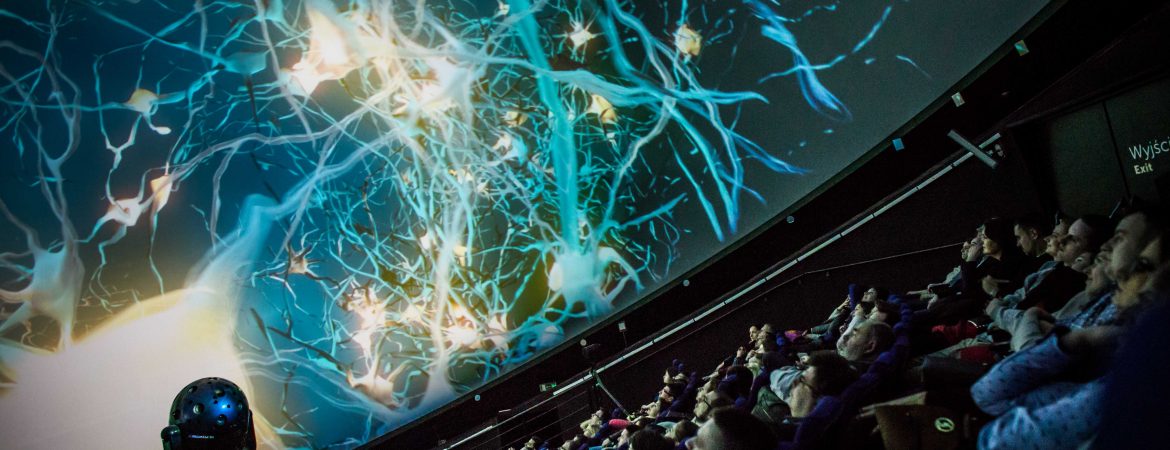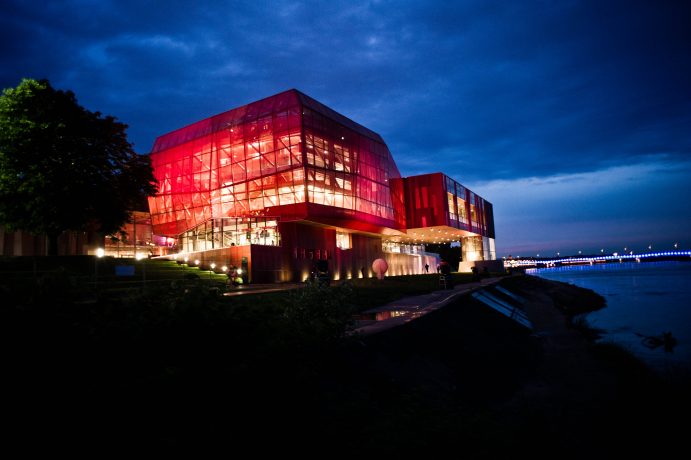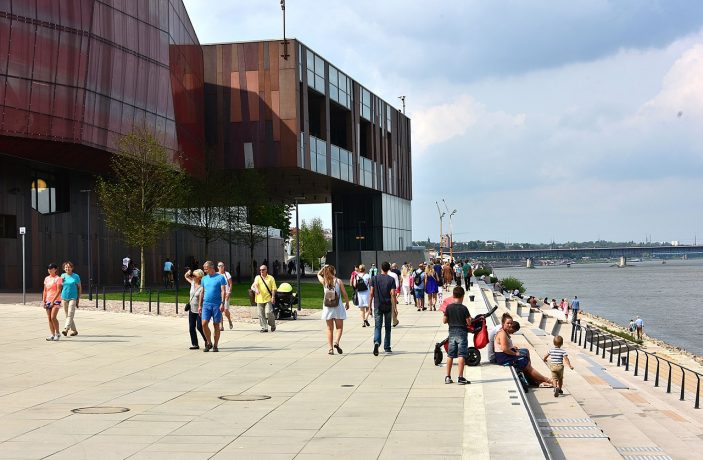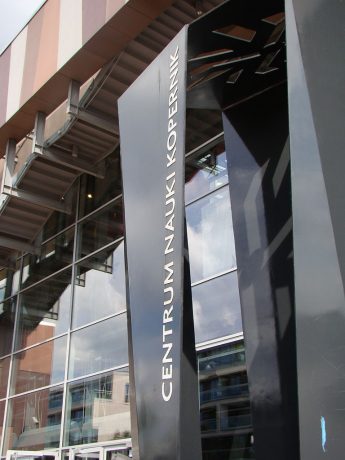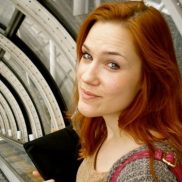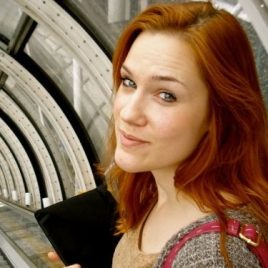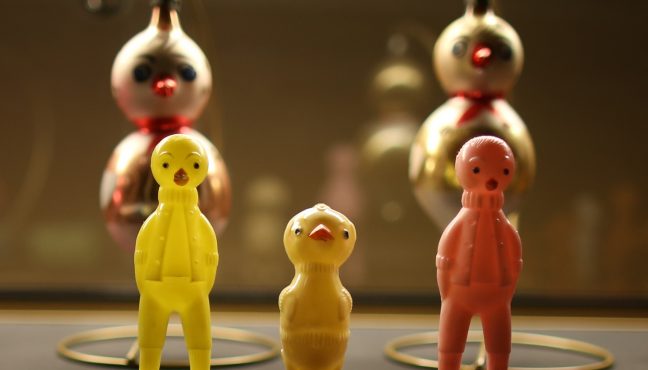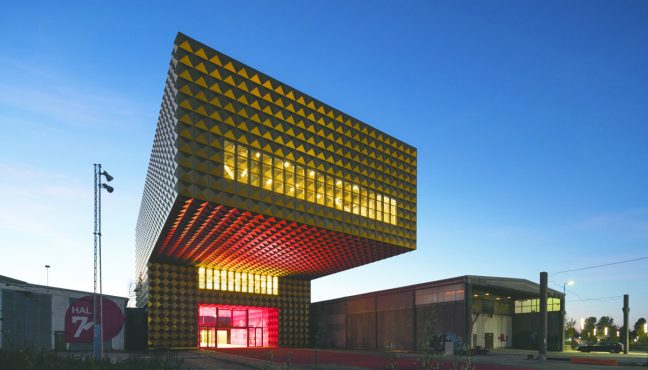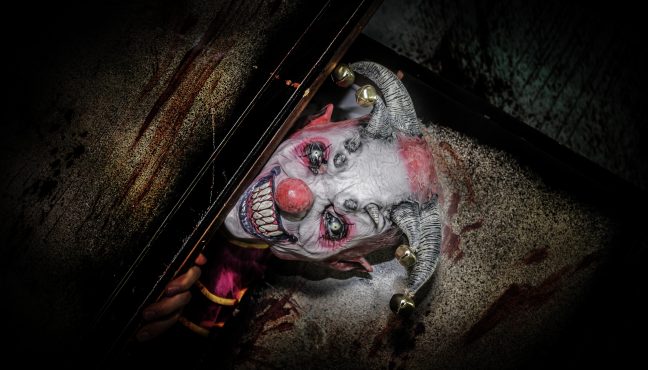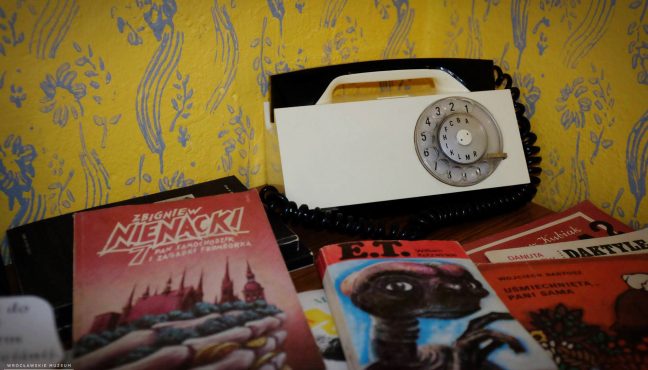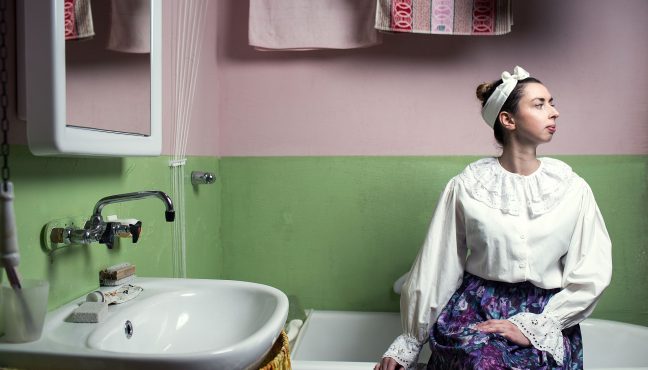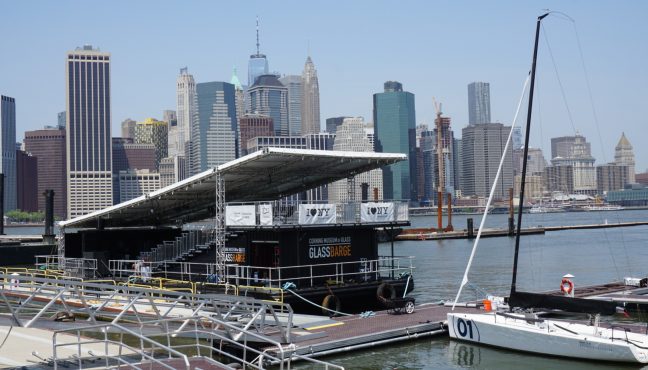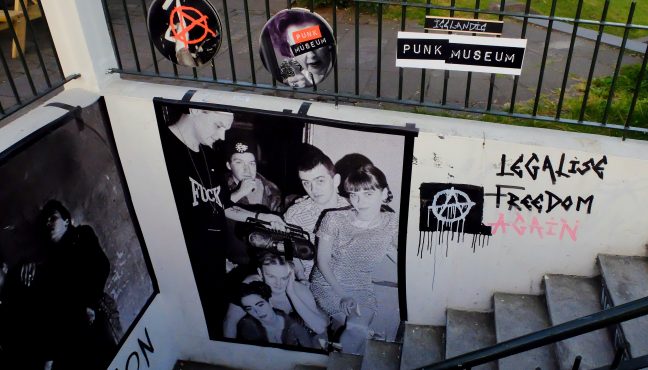We have visited Warsaw quite a few times now and have already suggested several great places for you to spend your day at. Art, history, interesting outdoor activities, you name it! This time we discovered an excellent place for the geeks, nerds and people who like a little adventure. There is everything you need to have a great evening: good music, good beers and a fair dose of… scientific experiments! Is it possible to learn while relaxing? Indeed, at Copernicus Science Center it is.
The person who started it all is Łukasz Turski, a Polish physicist, professor and a popularizer of physics back in 2004. On April 1, 2004, the president of Warsaw appointed a team of experts to start shaping the idea of making a science center for everyone. Six years later, the first part of the building opened to the public, presenting several permanent exhibitions. The opening was also marked by the amazing outdoor show „The Great Explosion,” directed by Saskii Boddeke and Peter Greenaway. The Center was visited by 13 thousands guests during the first week alone. That was just the beginning.


Copernicus Science Center complex was built by the Vistula River in the close company of BUW (Warsaw University Library, which we also wrote about, look for it in our SEE section). In the last few years, the Center has even gained its own Metro Station, so finding out how to get there is extremely easy. The Center consists of four parts: the „L” shaped building, which is a main building with all the exhibitions, shops and cafe; the planetarium with a dome of sixteen meters in diameter; Explorers Park that surrounds the center where visitors can find devices for the outdoor experiments, outdoor art gallery and amphitheater; and the last part of the center is its parking and underground workshop space. It’s surely one of the biggest science centers in Poland and one of the biggest in Central-Eastern Europe. Only the surface of the main building counts about fifteen thousand square meters. Last year, the Center announced a competition for its new building, the Copernicus Revolution Lab, which will be an interdisciplinary center focused on examining the process of modern teaching and competency necessary in the 21st century. The Lab is planned to open for the public in 2020.


Copernicus Science Center has seven permanent galleries: On the Move, Bzzzz! (this one is for kids), RE: Generation, Thinkatorium, High Voltage Theatre, Robotic Theatre (which sadly will be closed from 29th of April until further notice), Look: there’s the Earth (the one takes place in planetarium). There are also some temporary displays such as the current one: Air - is not just nothing. Usually, a visit to the center lasts between 3 - 5 hours as it’s hard not to take part in all the experiments!


One Thursday a month (and we were lucky enough to be there that one Thursday!), the Center opens between 7pm and 10pm only for adults. Each such evening is focused on a different topic and, apart from the lectures, visiting all the galleries and masterclasses with experts, there are also concerts and drinks served! The evening we had pleasure to take part in was named „Frankenstein 4.0” and was a tribute to the 200th anniversary of the first publishing of Mary Shelley's novel Frankenstein. The planned discussion touched on the topics of AI and Machine Learning along with Frankenstein’s echoes in modern medicine and genetics. There was also a huge attraction of visiting Frankenstein Town! Apparently, and not many people know about it, there is a little town in the Silesia district of Poland, which from 1945 was called Frankenstein! The town had a famous issue where, in 1606 during the plague epidemic, gravediggers were stealing corpses from the cemetery to make a special powder for infecting everyone. Was this story about using the dead bodies an inspiration for Shelley to write Frankenstein?


Apart from the specialties prepared for the Frankenstein themed evening, we had a chance to visit all the permanent exhibitions. On the Move counts around 80 interactive exhibits, which you can touch, feel and check for yourself. The exhibits are grouped thematically and there are sectors such as Electricity and Magnetism, Simple Machines, Waves and Vibrations, Gyroscopes and Inertia, Fluids (Liquids and Gases), Cosmos and Chaotic Phenomena. If you ever wanted to try something at school, but were too shy or scared of your teacher - then here you have a chance to check it all! The best part is that you can really take your time to think about how it all works, come up with the conclusion and try again. What can be the better way of learning?
We also visited High Voltage Theatre that turned out to be quite a show explaining how the electrical current flows. Some volunteers from the audience were picked to help with the experiments! The audience was not allowed to take pictures or film inside the theatre and its all supposed remain a little secret. We can just encourage you that it’s worth a visit while you are in the Center.


Copernicus Science Center also has its own club, which was created for the most loyal and most adventurous science enthusiasts. Membership allows you to skip the lines (and there are always big lines as the Center is really popular!), enter all the exhibitions as well as invite your family or friends for free in order to show them your favorite displays!
Once you enter Copernicus Science Center you lose the sense of time. You don’t even notice when four hours of wandering, trying, experimenting and reading has just passed!
